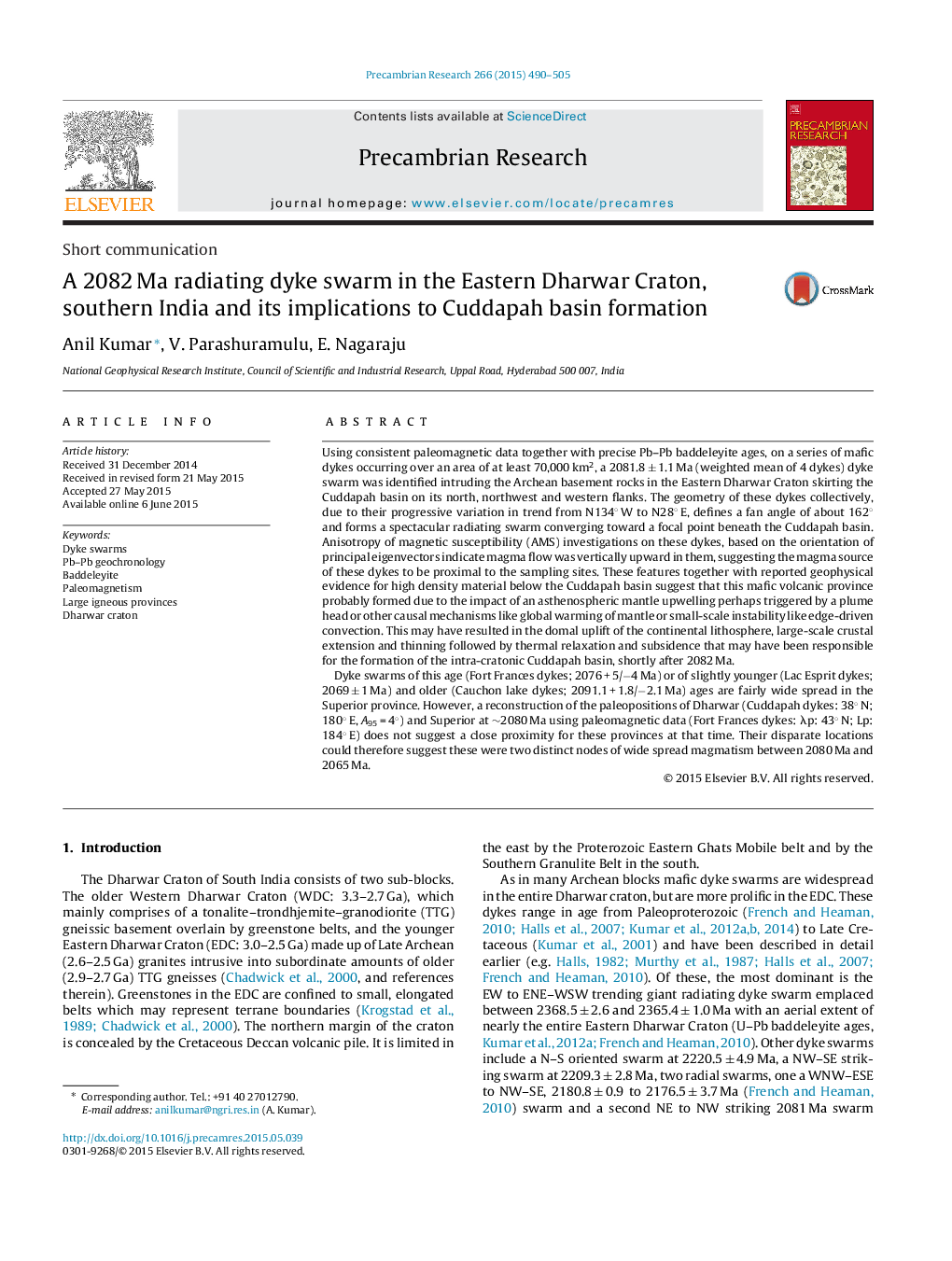| کد مقاله | کد نشریه | سال انتشار | مقاله انگلیسی | نسخه تمام متن |
|---|---|---|---|---|
| 4722555 | 1639609 | 2015 | 16 صفحه PDF | دانلود رایگان |

• Report of a 2082 Ma radiating dyke swarm in the Eastern Dharwar Craton.
• The focus of this dyke swarm lies below the intracratonic Cuddapah basin.
• This thermal event could have initiated the formation of the intracratonic basin.
Using consistent paleomagnetic data together with precise Pb–Pb baddeleyite ages, on a series of mafic dykes occurring over an area of at least 70,000 km2, a 2081.8 ± 1.1 Ma (weighted mean of 4 dykes) dyke swarm was identified intruding the Archean basement rocks in the Eastern Dharwar Craton skirting the Cuddapah basin on its north, northwest and western flanks. The geometry of these dykes collectively, due to their progressive variation in trend from N134° W to N28° E, defines a fan angle of about 162° and forms a spectacular radiating swarm converging toward a focal point beneath the Cuddapah basin. Anisotropy of magnetic susceptibility (AMS) investigations on these dykes, based on the orientation of principal eigenvectors indicate magma flow was vertically upward in them, suggesting the magma source of these dykes to be proximal to the sampling sites. These features together with reported geophysical evidence for high density material below the Cuddapah basin suggest that this mafic volcanic province probably formed due to the impact of an asthenospheric mantle upwelling perhaps triggered by a plume head or other causal mechanisms like global warming of mantle or small-scale instability like edge-driven convection. This may have resulted in the domal uplift of the continental lithosphere, large-scale crustal extension and thinning followed by thermal relaxation and subsidence that may have been responsible for the formation of the intra-cratonic Cuddapah basin, shortly after 2082 Ma.Dyke swarms of this age (Fort Frances dykes; 2076 + 5/−4 Ma) or of slightly younger (Lac Esprit dykes; 2069 ± 1 Ma) and older (Cauchon lake dykes; 2091.1 + 1.8/−2.1 Ma) ages are fairly wide spread in the Superior province. However, a reconstruction of the paleopositions of Dharwar (Cuddapah dykes: 38° N; 180° E, A95 = 4°) and Superior at ∼2080 Ma using paleomagnetic data (Fort Frances dykes: λp: 43° N; Lp: 184° E) does not suggest a close proximity for these provinces at that time. Their disparate locations could therefore suggest these were two distinct nodes of wide spread magmatism between 2080 Ma and 2065 Ma.
Journal: Precambrian Research - Volume 266, September 2015, Pages 490–505